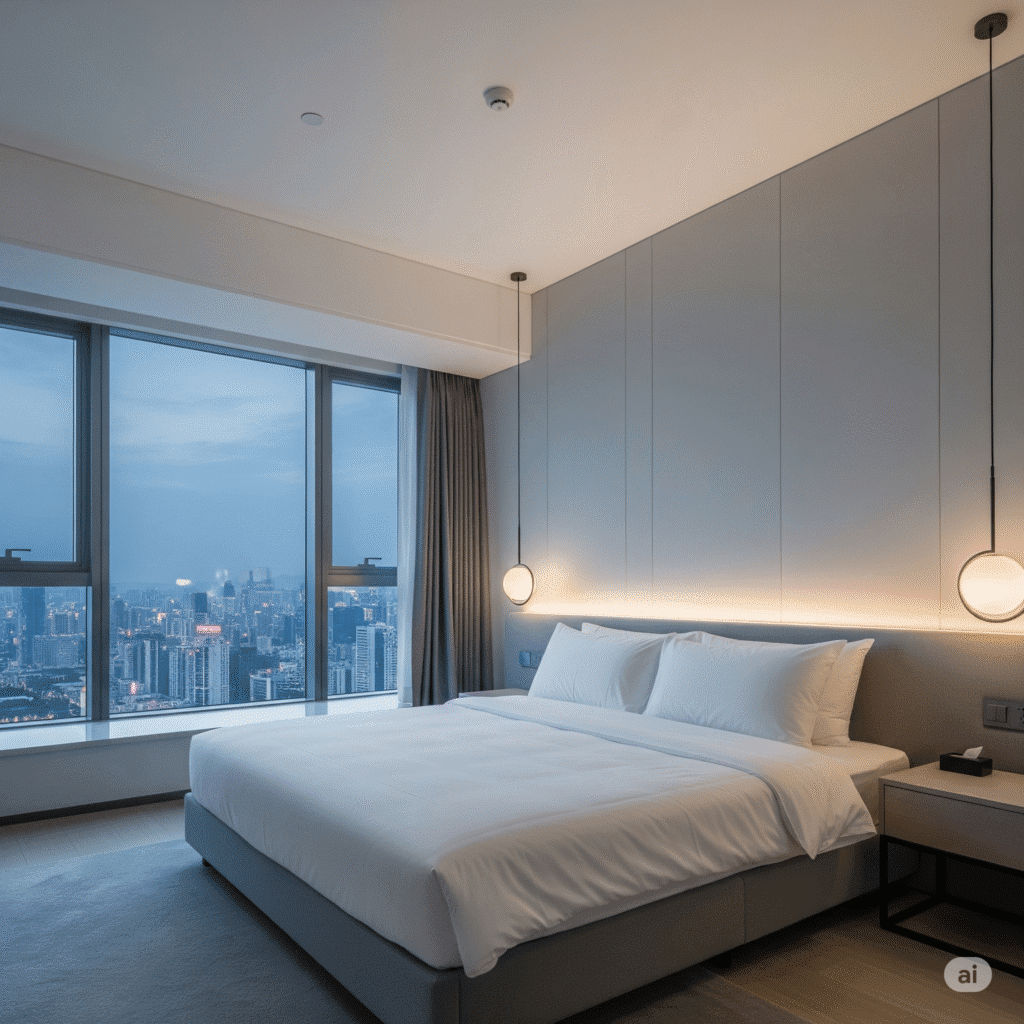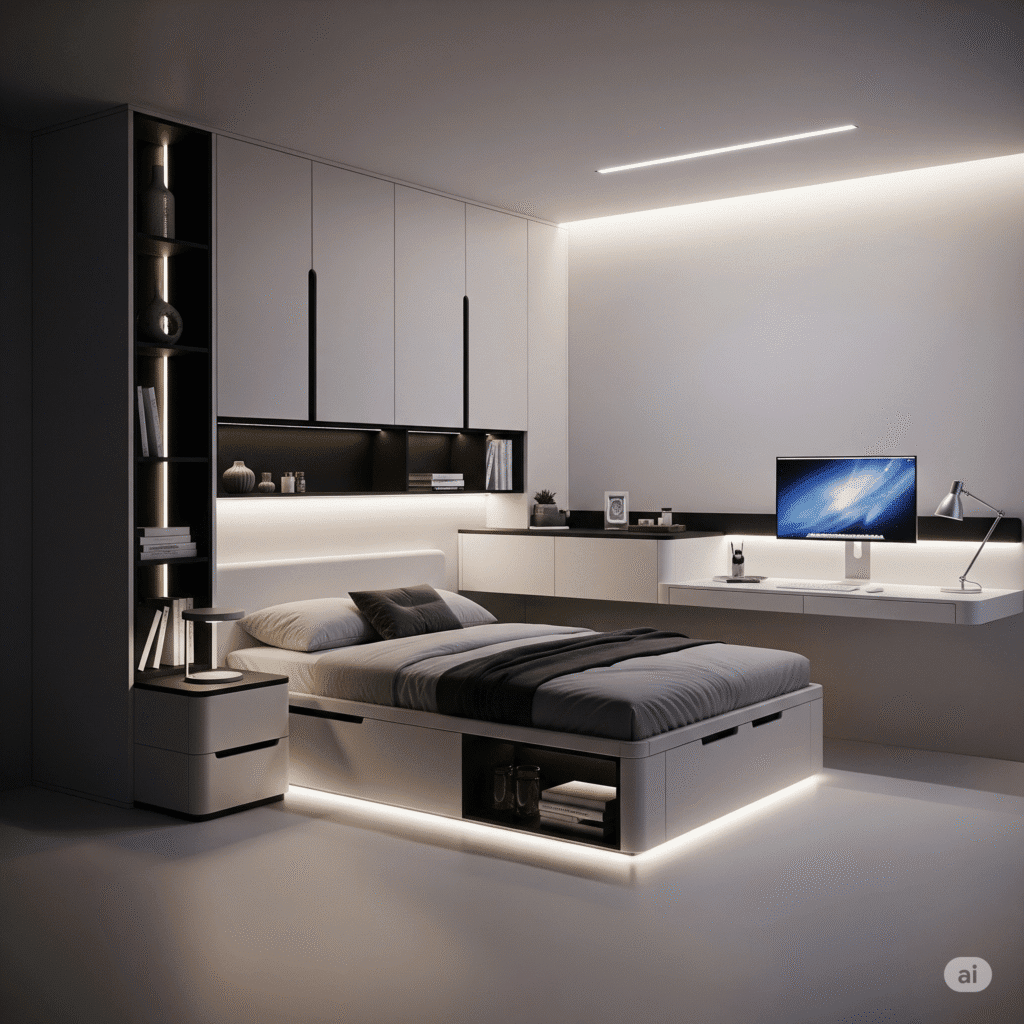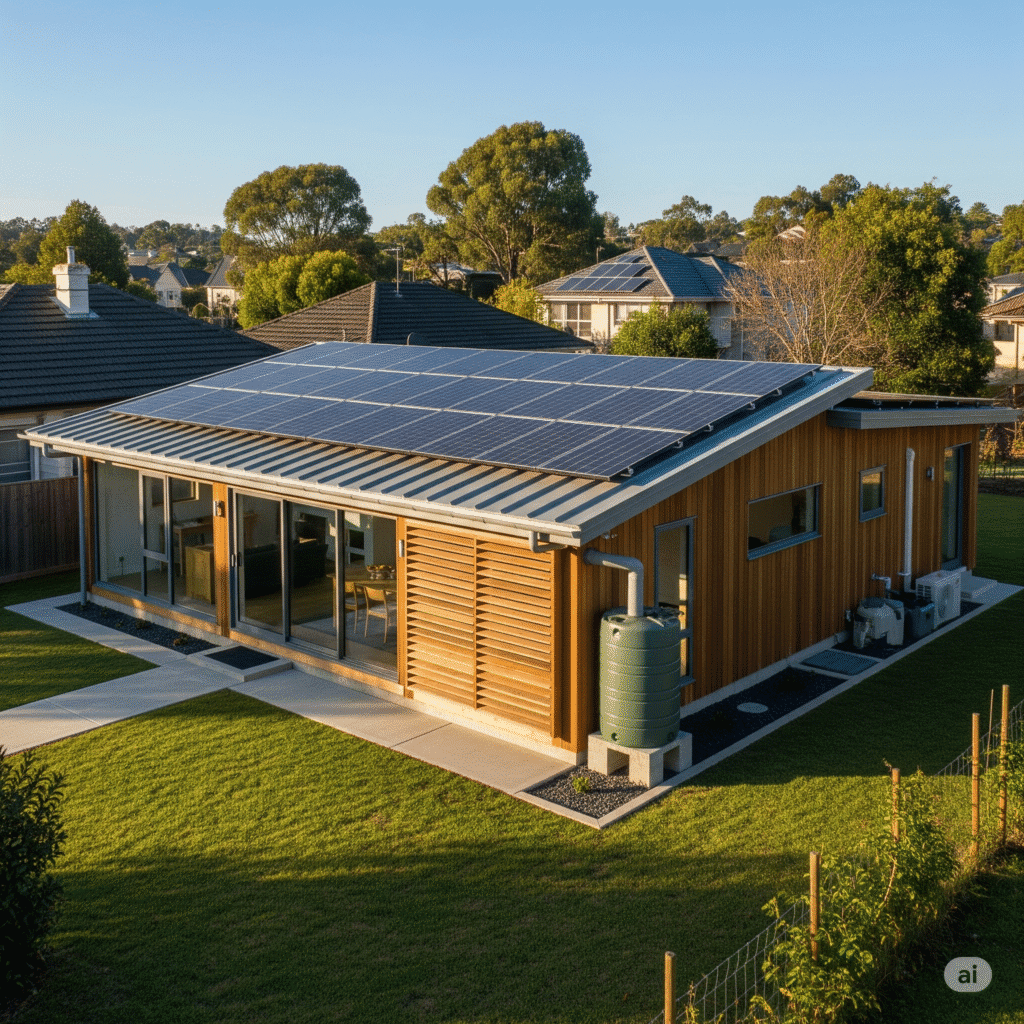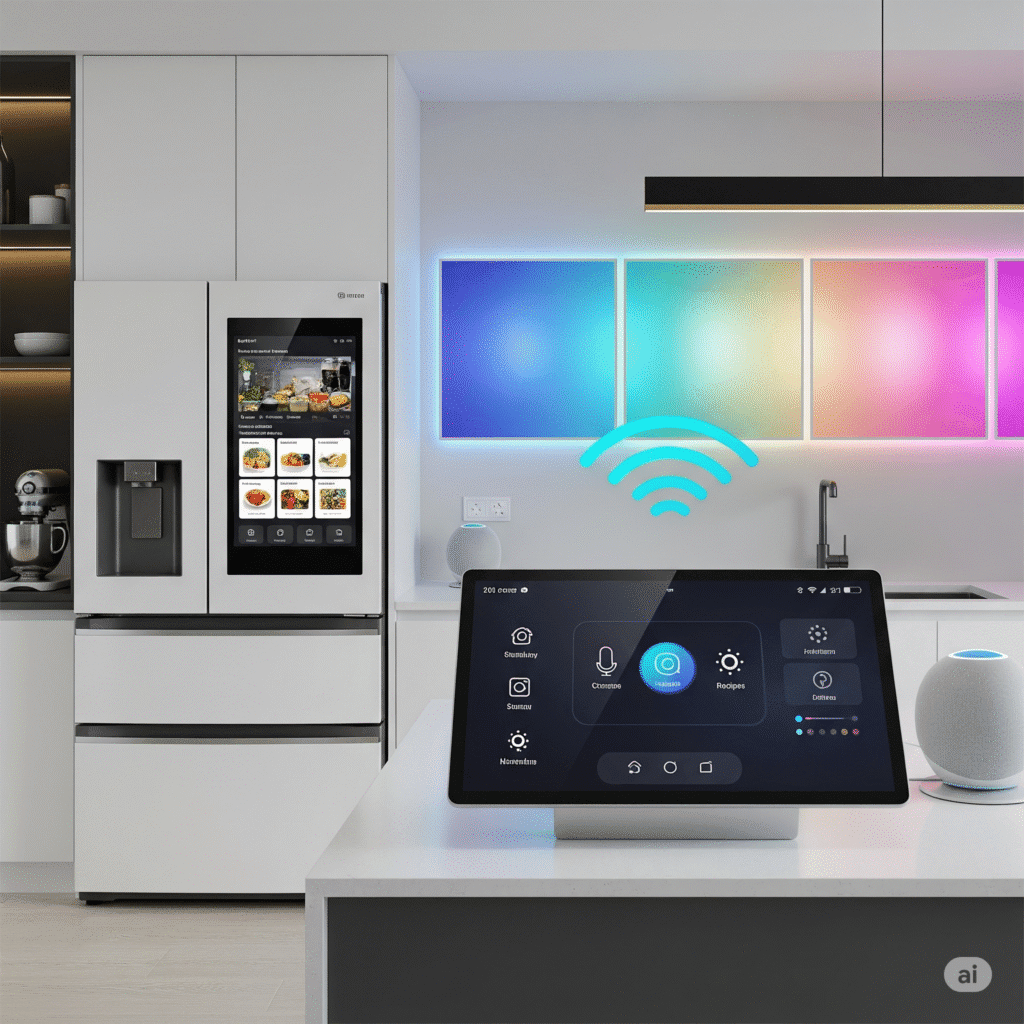Modern Home Design 2025 is transforming the way we think about our living spaces. Have you ever wondered what your dream home might look like in the near future? Today’s homes are becoming smarter, more sustainable, and beautifully simple, combining cutting-edge technology with timeless comfort.
Whether you’re planning to build a new house, renovate your current space, or simply update your interior decor, this guide will show you the most exciting trends shaping homes around the world. You’ll discover practical ideas for creating stylish interiors, learn about the latest smart living spaces, and find inspiration for eco-friendly homes that don’t compromise on style.
From minimalist house design to sustainable home design, we’ll explore everything you need to know about modern architecture ideas and latest interior trends. Get ready to transform your space into a home that’s both beautiful and functional for years to come.
In recent years, modern home design 2025 has redefined the way we perceive residential spaces. From smart automation to eco-conscious architecture, this design approach blends innovation with comfort. Whether you live in a suburban house or a compact city apartment, embracing modern home design 2025 can significantly improve your lifestyle and sustainability quotient.
Why Modern Home Design is Evolving
The world of home design is changing faster than ever before, and Modern Home Design 2025 reflects these exciting shifts. Our lifestyles have transformed dramatically, with remote work becoming the norm for millions of people worldwide. This change has made us rethink how we use our living spaces, creating a demand for flexible, multi-functional areas that can adapt to our daily needs.
Technology plays a huge role in shaping modern house ideas. Smart home systems are no longer luxury features—they’re becoming essential tools that help us save energy, increase security, and make daily tasks easier. At the same time, growing environmental awareness has pushed sustainable home design to the forefront, with homeowners seeking eco-friendly materials and energy-efficient solutions.
Global trends show that people are choosing smaller, more efficient homes that maximize every square meter. The focus has shifted from having more space to having better space. Modern homes prioritize comfort, simplicity, and efficiency, creating environments that support both productivity and relaxation. This evolution in home design trends 2025 reflects our desire for spaces that truly enhance our quality of life.
One of the most exciting aspects of modern home design 2025 is its emphasis on multifunctional living. Open floor layouts, smart furniture, and AI-integrated appliances are all part of the evolution. Homeowners are now seeking modern home design 2025 principles that offer flexibility, efficiency, and visual harmony within their spaces.

Top 10 Modern Home Design Trends for 2025
1. Nature-Inspired Design
Bringing the outdoors inside has become a cornerstone of Modern Home Design 2025. This trend focuses on using natural materials like wood, stone, and bamboo throughout the home, creating a warm and organic atmosphere. Large windows invite natural light to flood interior spaces, while indoor plants of various sizes add life and color to every room. The goal is to create a seamless connection with nature that promotes wellness and reduces stress. Natural textures, earth-inspired color palettes, and materials that age beautifully over time are key elements of this design approach.
2. Minimalist Style
Clean lines, simple layouts, and clutter-free spaces define the minimalist approach in modern house ideas. This style emphasizes quality over quantity, featuring furniture pieces that serve multiple purposes and storage solutions that keep belongings organized and out of sight. The minimalist aesthetic creates calm, peaceful environments where every item has a purpose and place. Neutral color schemes, smooth surfaces, and carefully curated decor pieces help achieve this sophisticated look. The beauty lies in the simplicity and the sense of spaciousness it creates, even in smaller homes.
Sustainability is at the heart of modern home design 2025. From energy-efficient insulation to solar-integrated rooftops, the focus is on reducing the carbon footprint without compromising on aesthetics. Every element, from materials to layout, supports eco-friendly living, making modern home design 2025 both stylish and responsible.
3. Smart Home Technology
Technology integration is revolutionizing stylish interiors and making homes more efficient than ever. Voice assistants control lighting, temperature, and entertainment systems with simple commands. Smart locks provide security and convenience, while automated curtains and blinds adjust to optimize natural light and privacy throughout the day. Energy-efficient smart appliances learn your habits and adjust their operation to save power. These technological advances don’t just add convenience—they contribute to sustainable living by optimizing resource usage and reducing waste.
4. Eco-Friendly Materials
Sustainable home design emphasizes the use of environmentally responsible materials that reduce environmental impact. Bamboo flooring, recycled wood furniture, and reclaimed metal fixtures are popular choices that combine style with sustainability. Energy-saving systems like LED lighting, efficient insulation, and low-VOC paints create healthier indoor environments. These materials often have unique textures and appearances that add character to modern spaces. The trend extends to choosing locally-sourced materials that support regional economies while reducing transportation-related carbon emissions.
5. Multi-Purpose Rooms
Flexible spaces that adapt to different needs throughout the day are essential in Modern Home Design 2025. Home offices that transform into guest bedrooms, dining areas that double as workspaces, and living rooms with hidden storage solutions maximize functionality without sacrificing style. Modular furniture pieces can be rearranged to create different configurations for various activities. This approach is particularly valuable in urban environments where space is at a premium. The key is choosing versatile furniture and creating zones within rooms that can serve multiple functions seamlessly.

6. Curved Shapes and Soft Edges
Angular, harsh lines are giving way to softer, more organic shapes in future home design. Rounded corners on furniture, arched doorways, and curved windows create a gentler, more welcoming atmosphere. This trend extends to architectural elements like spiral staircases, curved walls, and circular light fixtures that add visual interest and flow. Soft edges make spaces feel more comfortable and relaxed while creating unique focal points. The curved design elements work particularly well with natural materials, enhancing the overall organic feel of modern interiors.
7. Indoor-Outdoor Living
Breaking down barriers between interior and exterior spaces creates a sense of expanded living area and stronger connection with nature. Large sliding glass doors, covered patios, and seamless flooring transitions blur the lines between inside and outside. Outdoor kitchens, comfortable seating areas, and weather-resistant furniture extend the living space beyond traditional boundaries. This trend works well in various climates, with adaptations like covered terraces for rainy regions or shaded courtyards for sunny areas. The result is homes that feel larger and more connected to their natural surroundings.
8. Bold Colors and Textures
While neutral tones remain popular, Modern Home Design 2025 also embraces rich, earthy colors that add depth and personality to spaces. Deep forest greens, warm terracotta, and sophisticated navy blues create dramatic focal points when used thoughtfully. Textured walls, woven fabrics, and natural materials like rough-hewn wood or stone add tactile interest. The key is balancing bold elements with calmer tones to create sophisticated, layered looks. These colors and textures work together to create spaces that feel both contemporary and timeless.
9. Japandi Style
This popular design philosophy combines Japanese minimalism with Scandinavian functionality, creating spaces that are both serene and practical. Natural wood tones, simple geometric shapes, and a focus on craftsmanship characterize this style. The color palette typically includes warm whites, soft grays, and natural wood tones that create a calming atmosphere. Furniture pieces are functional yet beautiful, with clean lines and quality construction. The Japandi approach to smart living spaces emphasizes mindful consumption and appreciation for well-made, long-lasting items.
10. Open Kitchens with Storage Solutions
Modern kitchens serve as the heart of the home, combining cooking, dining, and social spaces in seamless designs. Sleek cabinets with hidden storage, kitchen islands that provide extra workspace, and integrated appliances create clean, uncluttered looks. Open shelving displays beautiful dishes and kitchen accessories while keeping everyday items within easy reach. The latest interior trends include touch-activated cabinets, pull-out pantries, and innovative corner storage solutions that maximize every inch of available space. These kitchens balance style with functionality perfectly.
Sustainable Home Design
Environmental consciousness is driving significant changes in how we build and renovate our homes. Sustainable home design isn’t just about being environmentally responsible—it’s about creating healthier, more efficient living spaces that save money over time. Solar panels, energy-efficient windows, and improved insulation are becoming standard features in Modern Home Design 2025, helping homeowners reduce their energy consumption and utility bills.
Simple upgrades can make a big difference without requiring major renovations. LED lighting systems use up to 80% less energy than traditional bulbs while lasting much longer. Smart thermostats learn your schedule and preferences, automatically adjusting temperature settings to optimize comfort and efficiency. Water-saving fixtures and appliances reduce consumption without compromising performance.
Green building materials like recycled steel, sustainable wood, and low-impact concrete alternatives help reduce construction waste and environmental impact. These materials often have unique aesthetic qualities that enhance the visual appeal of modern spaces. Many sustainable options are now competitively priced with traditional materials, making eco-friendly choices accessible to homeowners with various budgets.
Even small changes can contribute to more sustainable living. Choosing locally-made furniture, installing programmable lighting systems, and adding better insulation to existing walls are cost-effective ways to improve your home’s environmental performance. The key is to start with one or two changes and gradually incorporate more sustainable elements as opportunities arise.

Smart Features for Modern Homes
Technology integration in smart living spaces has moved beyond novelty to necessity, offering real benefits for comfort, security, and efficiency. Smart doorbells with video cameras allow homeowners to see and speak with visitors from anywhere in the world. Automated window treatments adjust throughout the day to optimize natural light and maintain privacy. Smart air conditioning systems learn your preferences and schedule, ensuring comfort while minimizing energy waste.
Voice-controlled assistants serve as central hubs for managing various home systems, from playing music and controlling lights to setting timers and answering questions. Smart security systems provide peace of mind with features like motion detection, automatic alerts, and remote monitoring capabilities. These systems can be customized to fit different lifestyles and security needs.
Getting started with smart home features doesn’t require extensive renovations or significant investment. Many devices can be easily installed in existing homes, with wireless options that don’t require new wiring. Smart plugs, bulbs, and switches are affordable starting points that provide immediate benefits. As you become more comfortable with the technology, you can gradually add more sophisticated systems like smart locks, automated irrigation, and integrated entertainment systems.
The beauty of Modern Home Design 2025 lies in how seamlessly technology integrates with daily life, enhancing convenience without creating complexity. The best smart home features work quietly in the background, making life easier without requiring constant attention or technical expertise.

Color Trends and Interior Decor
The color palette for 2025 reflects our connection to nature and desire for calm, sophisticated spaces. Warm clay tones bring earthiness and comfort to living areas, while sage green adds freshness without being overwhelming. Soft beige and cream tones provide neutral backdrops that work well with natural materials and changing seasonal decor. Deep navy blues and charcoal grays offer dramatic sophistication when used as accent colors.
Interior styling trends favor mixing old and new elements to create layered, personal spaces. Handmade furniture pieces add character and craftsmanship to rooms filled with modern conveniences. Vintage accessories and family heirlooms gain new life when displayed alongside contemporary art and sleek furnishings. This approach to latest interior trends creates homes that feel collected over time rather than decorated all at once.
Lighting plays a crucial role in Modern Home Design 2025, with emphasis on soft, warm illumination that creates inviting atmospheres. Multiple light sources at different heights add depth and flexibility to rooms. Table lamps, floor lamps, and pendant lights provide task and ambient lighting while serving as decorative elements.
Budget-friendly decorating ideas include painting accent walls in trending colors, adding textured throw pillows, and incorporating plants throughout the home. Shopping at local artisan markets, repurposing existing furniture with new finishes, and creating gallery walls with meaningful artwork are cost-effective ways to update your space with current design trends.
FAQ Section
What is modern home design? Modern home design emphasizes clean lines, functional layouts, and the integration of technology with sustainable materials. It focuses on creating comfortable, efficient spaces that adapt to contemporary lifestyles while maintaining aesthetic appeal and environmental responsibility.
How can I make my home modern in 2025? Start with simple updates like adding smart lighting, incorporating natural materials, and decluttering spaces. Paint walls in trending colors, add plants for a nature-inspired feel, and invest in multi-functional furniture that maximizes space efficiency.
Are smart homes expensive? Smart home features range from affordable options like smart bulbs and plugs to more sophisticated systems. You can start small with basic devices and gradually add more features. Many smart home investments pay for themselves through energy savings over time.
What colors are trending in 2025? Popular colors include warm earth tones like clay and terracotta, calming sage green, sophisticated navy blue, and neutral beiges. These colors work well together and complement natural materials and modern furnishings.
Can I make my home eco-friendly without big changes? Yes! Simple changes like switching to LED lights, adding better insulation, using low-VOC paints, and choosing sustainable materials for small updates can significantly improve your home’s environmental impact without major renovations.
How do I incorporate nature into my interior design? Add indoor plants, use natural materials like wood and stone, maximize natural light with larger windows or mirrors, and choose earth-inspired colors. Natural textures and organic shapes also help bring outdoor elements inside.
As we move deeper into this decade, modern home design 2025 continues to evolve. It’s not just about how a home looks, but how it functions in harmony with technology, the environment, and the people living in it. Whether renovating or building anew, incorporating modern home design 2025 ideas will ensure a space that remains relevant and future-proof.
What are the top modern home design trends in 2025?
The biggest home design trends in 2025 include smart technology, biophilic elements, minimalist layouts, curved architecture, and energy-efficient materials. These styles blend luxury with sustainability.
How is smart home technology evolving in 2025?
Smart homes now use AI-driven automation, voice assistants, app-based lighting, solar monitoring, and integrated security systems — all designed to simplify and secure daily living.
What is biophilic design in modern homes?
Biophilic design brings nature indoors by using natural materials, large windows for sunlight, indoor gardens, water features, and earthy textures. It boosts mental well-being and home aesthetics.
Are modern homes in 2025 energy efficient?
Yes. From solar panels to smart insulation and passive cooling techniques, energy-efficient home design is now a core standard. Builders use eco-friendly materials and cutting-edge HVAC systems.
How can I make my home design future-ready?
Plan flexible spaces like home offices and gym corners. Add smart lighting, strong internet, durable sustainable materials, and a layout that allows tech upgrades. Think of how your lifestyle may evolve.
Conclusion
Modern Home Design 2025 represents an exciting evolution in how we think about our living spaces. The trends we’ve explored—from sustainable materials and smart technology to nature-inspired design and flexible multi-purpose rooms—all work together to create homes that are more comfortable, efficient, and beautiful than ever before.
The key to successful modern house ideas lies in choosing elements that reflect your lifestyle and values. Whether you’re drawn to the minimalist aesthetic, excited about smart home technology, or passionate about sustainable living, there are simple ways to incorporate these trends into your existing space. Remember that the best homes are those that adapt to your needs while creating environments that inspire and energize you.
You don’t need to implement every trend at once. Start with one or two changes that appeal to you most—perhaps adding some plants for a nature-inspired feel, upgrading to smart lighting, or incorporating trending colors through accessories and decor. These small steps can make a significant difference in how your space looks and feels.
The future of home design is bright, sustainable, and beautifully functional. By embracing the principles of Modern Home Design 2025, you’re creating a space that will serve you well for years to come while contributing to a more sustainable and connected world.
Start your modern home journey today—one smart design choice at a time. “Start your modern home journey today—one smart design choice at a time.”
“Looking to make your home smarter and more stylish? Explore our guides.